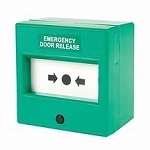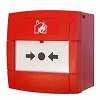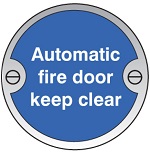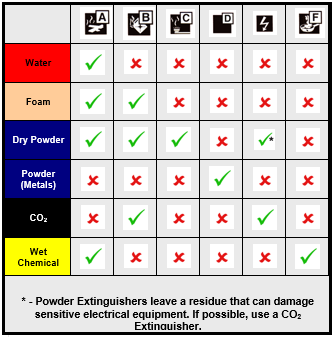- 1 Introduction
- 2 Fire Risk Assessment
- 3 Fire Evacuation / Information
- 4 Fire Doors
- 5 Fire Exits
- 6 Fire Precautions
- 7 Action to be taken on discovering Fire or Smoke
- 8 Fire Assembly Points
- 9 Fire Alarm Testing
- 10 Fire Doors
- 11 Fire Drill
- 12 Examinations
- 13 Emergency plan
- 14 Training and instruction
- 15 Fire Extinguishers
- 16 Personal Emergency Evacuation Plans
- 17 Maintenance and Testing of Fire Safety Equipment
- 18 Premises Information Box
- 19 Building Maintenance and Refurbishment Works
- 20 Contractors
- 21 Hot Works
- 22 Smoking
Introduction
The Head of Department (HoD) will appoint a Departmental Fire Safety Manager (DFSM) in writing. The DFSM will advise and assist the HoD with implementation of the University Fire Safety Policy and arrangements at a local level within the Department. As the Department is split over several buildings, the DFSM will be assisted by a Deputy Departmental Fire Safety Manager (DDFSM) and Local Deputy Fire Safety Managers (LDFSMs). See the CUED Fire Safety Organisational Chart.
The HoD will appoint a sufficient number of suitably trained and experienced persons to implement any necessary measures for fire safety and to assist in undertaking any necessary preventive and protective measures.
Fire Risk Assessment
The University Fire Safety Team (UFST) ensures a formal Fire Risk Assessment (FRA) process is undertaken for all the Department’s premises. The FRA process is carried out on behalf of the University by an external Fire Consultant every 3 years.
The UFST will review these Fire Risk Assessments when completed and allocate remedial actions as appropriate to either the Department or Estates Division.
The Department will action the significant findings of the FRA where appropriate and review and update the FRA at least once a year and at such other times as changes occur that will have an impact on the fire precautions and procedures. As part of the annual FRA review a Fire Risk Assessment Review Form is to be completed annually.
The UFST will be notified of any layout which could invalidate the current FRA (e.g., change of use or structural changes affecting layout, or change of fire hazards on the premises).
The FRA is a legal document and will be kept by the DFSM, so it is available and easily accessible for inspection upon request by relevant stakeholders such as UFST, insurers, and Local Authorities such as Cambridgeshire Fire & Rescue Service (CFRS).
Fire Evacuation / Information
The DFSM or LDFSMs will develop appropriate Emergency Response / Fire Alarm Activation procedures ensuring that suitable training is provided to relevant staff acting as Fire Wardens, ideally prior to taking up the role. Refresher training will be provided as necessary.
Fire presents the greatest single threat to life and property. It is therefore ESSENTIAL to familiarise yourself with the information available and fire safety devices designed to protect you and others in the event of a fire.
Know Your Escape Routes
Take a moment to think about how you would escape from where you are – it could save your life.
You must know your escape routes, as in the event of a real fire you may only have a short time to evacuate the building. It is important to have a plan:
- Have a primary escape route that you will use
- Also think about a secondary escape route, in case your first choice is blocked
Escape routes should be kept free from any obstructions, slip or trip hazards at all times. If you have any concerns that one is blocked, please report it to the Local Deputy Fire Safety Managers and/or safety-office@eng.cam.ac.uk .
Fire Doors
Fire Doors are designed to slow the progress of a fire. If the door says, ‘keep closed’, then keep it closed.

If you are unable to close a fire door properly or see a fire door persistently held open or wedged open, then REPORT IT!
Fire Exits
Fire exits are a designated way out of a building in the event of a fire occurring. Fire exits need to be clearly marked and unobstructed at all times.


GREEN DOOR EMERGENCY RELEASE BUTTON
Some of our doors have a door release that requires you to push to unlock the door to allow you to exit. If you find that one of these types of door lock will not open during a fire alarm - simply look for the 'green box' (this is the emergency door release), press the black dot to release the lock and the door can then be pushed open. 
To avoid these being pushed accidentally in normal operation, they are sometimes positioned a short distance from the door, so you may need to step back to locate it.
If it is necessary to operate a green box, then please report the use to security so the box can be reset.
Fire Precautions
Fire presents the greatest single threat to life and property. It is therefore ESSENTIAL to familiarise yourself with the information available and fire safety devices designed to protect you and others in the event of a fire.
Personal Preparation
- Read the 'Fire Action' signs posted by fire alarm call points.
- Know the location of the fire alarm call-points, and ensure you know how to operate them.
- Know your escape route and make sure it is kept clear of obstructions.
- Ensure that fire doors are kept closed.
- Report any missing, or damaged, fire appliances to the Local Deputy Fire Safety Manager or Departmental Fire Safety Manager.
- DO NOT tamper with fire appliances or detectors.
- All fire alarms are tested regularly; it is important to ensure that you are familiar with the sound of the alarm. Fire drills will also be held at regular intervals, and these must be treated as if they were actual evacuations.
Action to be taken on discovering Fire or Smoke
ON DISCOVERING A FIRE
The first thing to do if you discover a fire is to raise the alarm. This will give everyone in the building, including yourself, the maximum opportunity to evacuate.
- Shout FIRE, FIRE, FIRE (as loud as you can) to alert others in the vicinity as yourself
- Activate the fire alarm by using the fire alarm call point to alert the rest of the building
- Evacuate to the designated Fire Assembly Point
A fire alarm call point (also referred to as a break-glass) is essentially a small red box, mounted on a wall, which allows you to manually-trigger the fire alarm in the building.

These call points operate by a simple push on the black dot, which will operate the micro-switch inside the call point and will immediately activate the fire alarm.
ON HEARING THE FIRE ALARM
When you hear the fire alarm sounding, you must evacuate the building, by using your primary escape route, if that is not available then use your secondary escape route and leave the building.
DO’S (Steps to be taken by you)
- DO calmly follow the fire exit signs to the nearest fire exit
- DO go straight to the Fire Assembly Point
All staff and students are reminded that they are responsible for evacuating the building immediately upon hearing the fire alarm.
DON’T’S (Things you must avoid doing)
- DO NOT wait for someone to tell you to get out
- DO NOT stop to collect personal belongings
- DO NOT use a lift
- DO NOT walk through a building as a short cut to the Fire Assembly Point
- DO NOT stand in any roadway or beside entrances to a building as this may hinder access for the Fire Service
- DO NOT re-enter the building until told it is safe to do so (this will usually be by Local Fire Safety Manager, security staff or the Fire Service if in attendance)
If your building has an intermittent (standby) alarm:
- Make safe any experiment
- Be prepared to leave upon hearing the evacuation (continuous) alarm
IF IN DOUBT, GET OUT!
Fire Assembly Points
Fire Alarm Testing
Each department building will undertake weekly fire alarm checks, as per the local arrangements. Records will be kept, and action taken where appropriate.
Fire Doors
The prime purpose for fire doors is to save lives and stop the progress of fire, in support of both escaping occupants and fire-fighting activities. They are an important part of a building’s passive fire protection system.
The main functions of fire doors are:
- To allow egress from a space and to close once released
- Protect escape routes from the effects of fire (smoke, gases and flames)
- Potentially limit the amount of oxygen available to slow or stop the spread of fire.
- Fire doors are designed to resist the spread of fire for a period of time, normally a minimum of 30 minutes. This allows time for people to leave the building in the event of a fire.
To ensure fire doors are able to function, as above, to reduce the spread of fire and smoke between separate compartments of a structure and to enable safe egress from a building;
- DO NOT prop or wedge fire doors open.
- Some fire doors (mostly mid-corridor doors) are held open by a magnet which is released when the alarms go off. These are marked with a notice such as:

If you see such a fire door wedged open, please remove the obstruction and check that it closes.
- If there is a repeated problem or you are concerned, please email safety-office@eng.cam.ac.uk .
Fire Drill
The objective of carrying out a fire drill is to check that all the systems work, which includes the system for evacuating personnel. All members of the department are required to cooperate during fire drills by leaving the building by the shortest route and waiting at an assembly point for further instructions.
Prior to commencing the evacuation exercise, the Fire Team will make a call to University Security section to inform them a fire drill is to take place. To add an element of realism to fire drills, certain exits may be blocked, so that personnel have to choose another route out of the building.
The results of fire drills – times to evacuation, cooperation, etc, will be recorded and reported to the Department Safety Committee.
Examinations
Candidates are to be informed before they begin the examination of the special procedures to follow on the sounding of the fire alarm in the building.
The invigilators are to be informed of the following special procedure for examinations at these locations as necessary:
- Trumpington Street
- Institute for Manufacturing
Emergency plan
The Department has an emergency plan. This plan includes:
- the action to be taken by staff in the event of fire
- the evacuation procedure
- the arrangements for calling the fire brigade
- the location of assembly points
The plan is posted in prominent positions where staff can become familiar with it. More detailed plans are available in areas identified as being at higher risk from fire.
Training and instruction
Department staff, students and visitors must be aware of the risks of fire associated with their work, particularly if they work with hot processes or use highly flammable substances. All staff and students will be told during their induction process:
- how to warn others of the fire including the operation of the fire-warning system
- the location and use of escape routes
- how to assist or direct visitors or members of the public from the building
- the location of assembly points
- how to summon the fire service
- the location and use of fire safety equipment (where appropriate)
- the arrangements for calling the fire brigade
All Departmental staff will undergo annual online fire awareness safety training. An annual evacuation procedure will be undertaken for each building.
Fire Extinguishers
Even though we have fire extinguishers located around the department we do not expect you to use them. As firefighting is always best left to the professionals or those trained to use them. Your main priority is to calmly leave the building and evacuate to the fire assembly point.

Fire Assembly Point
On hearing the fire alarm, you must calmly follow the fire exit signs to the nearest fire exit and go straight to the designated Fire Assembly Point.
A reminder to all staff and students that they are responsible for evacuating the building immediately upon hearing the fire alarm.
Details of Fire assembly Points for a specific building can be found here.
Personal Emergency Evacuation Plans
The DFSM or LDFSM will provide guidance in the collation of a Personal Emergency Evacuation Plan (PEEP) for a student or member of staff. The PEEP is an agreed evacuation plan which contains all required information to ensure safe egress from a building by an individual requiring assistance to leave the building in an emergency. This guidance document will detail the responsibilities of those involved within the PEEP process and the potential strategies that can be used for evacuation. The DFSM or DDFSM will also arrange training for staff, in the use of any such equipment, as required.
Maintenance and Testing of Fire Safety Equipment
The Departmental Fire Safety Manager will ensure that fire safety equipment, including fire-fighting equipment, detection and warning systems, means of escape and emergency lighting, are regularly checked and maintained. The schedule detailed in Annex 1 will be followed.
Fire Alarm testing
Each department building will undertake weekly fire alarm checks, as per the local arrangements. Records will be kept, and action taken where appropriate.
Premises Information Box
A Premises Information Box (PIB) makes critical information easily accessible to the fire and rescue service during those crucial early moments. With all the essential information about a building readily available, such as floor plans and contact details, information the emergency services might need to make informed decisions.
This information is a recognised focal point where an organisation can highlight information specific to a given building.
The Premises information box should be checked monthly to ensure they are readily openable and that the contents are intact and up to date. Following any incident, the contents must be checked in case any items need replacement.
For further information see: Premises Information Box Guidance
Building Maintenance and Refurbishment Works
All building maintenance, refurbishment work and equipment maintenance requiring sources of heat or combustible materials must be cleared for use with the Facilities Manager/Building Project Manager. Contractor access to the Department must be authorised.
All materials brought into the Department in connection with the work being carried out must be stored away from sources of heat and must not obstruct exit routes.
Any contractor not complying may have their contract terminated.
Fire Safety Information Request Form
If a department building is having or planning to have any works/project works/maintenance carried out, then a Fire Safety Information Request Form (FIRF) will need to be completed prior to the work being started. The completed form is to be forwarded to the University Fire Safety Team - UniversityFireSafety@admin.cam.ac.uk .
Contractors
Where contractors are on site it will be the responsibility of the relevant person overseeing the works to ensure the appropriate level of fire safety provision is incorporated within any works schedule, contract agreement or risk assessment and where such works are likely to impact on the existing fire safety provision notification must be communicated (i.e. FIFR) to the University Fire Safety Team for consideration.
Contractors are to be made aware of the fire action plan for the area they are working in and should sign to confirm they understand. Where any work requires to be undertaken involving naked flame, heat source or mechanical sparks, a hot works permit must be issued and agreed prior to the commencement of works. Persons receiving the hot works permit should ensure suitable firefighting media is available and have personnel trained in the use of fire extinguishers.
For further information see: Contractor – Fire Safety
Hot Works
What are ‘HOT WORKS’?
Hot works include all temporary operations involving open flames or producing heat and/or sparks that could give rise to risks of fire and ignition of flammable substances and combustible materials. This includes, but is not limited to, brazing, cutting, grinding, soldering and welding (depending upon the nature of the work and its location).
Hot Works Permit - Validity
Hot works permits are location specific and only valid for a maximum of 1 working day. All work must cease at least 1 hour before the end of the working day, except in emergencies or exceptionally unusual circumstances in which case procedures must be agreed by all parties to the permit in writing and all mandatory control measures are maintained for a full hour after the work has finished.
A copy of the form MUST be retained for 12 months from date of issue.
Smoking
All staff, students, visitors and appointed contractors, will be informed that smoking is not permitted on any Department site and only allowed within designated smoking areas.
For further information see: University Smokefree Policy
